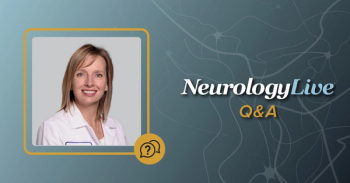
Clinician Perspectives on Black History Month: Larry Charleston IV, MD, MSc, FAHS
To honor Black History Month, NeurologyLive® spoke with influential Black clinicians on the leaders they look up to, the ongoing fight to overcome racial disparities, and ways to encourage diversity in health care.
Black History Month, a time dedicated to celebrating and honoring the contributions and sacrifices of African Americans, is observed every February in the United States and increasingly around the world. African Americans have played a central role in US history, including in medicine. Notable pioneers in medicine include Mary Eliza Mahoney, the first Black professional nurse in the US, as well as Solomon Carter Fuller, known as the first Black psychiatrist, who was a research assistant to Alois Alzheimer and reported the ninth case of Alzheimer disease ever described.
Across neurology specifically, there have been several other barrier-breakers, including Alexa Canady, who became the first Black woman to become a neurosurgeon in 1981, and Audrey Shields Penn, a neurologist and emeritus professor who was the first Black woman to serve as an acting director of an institute of the National Institutes of Health. While these individuals have helped open the door for a more diverse and inclusive society, challenges remain to building a more equitable environment in health care and beyond.
As part of our efforts to recognize contributions both past and present, NeurologyLive® spoke with several Black leaders in the neurology community to learn more about their experience in health care, what or who has inspired them, and how they are helping their communities overcome disparities.
We're pleased to feature insights from Larry Charleston IV, MD, MSc, FAHS, director of the Headache & Facial Pain Division, and director of Faculty Development at Michigan State University College of Human Medicine. Charleston is founder of Charleston Health Neurology & Head Pain Consultants, Co-founder of Charleston International in partnership with the Amway Corporation and Leadership Team Development, a National Institute of Minority Health and Health Disparities’ Research Institute Scholar, a UM Road Scholar, and a fellow of the American Headache Society.He current serves as a board member of the Clinical Neurological Society of America.
Is there a figure you've looked up to as a champion of diversity, equity, and inclusion while growing up or in your professional career?
In full transparency, I don’t believe I thought much about diversity equity and inclusion (DEI) as we know it today, thus did not have a champion in DEI that I looked up to while growing up. In fact, I echo my younger brother, Dr. LaVar Charleston, (Vice Chancellor and Chief Diversity Officer at University of Wisconsin- Madison) when he recently told the Capitol City Hues, “growing up in Detroit, MI, I was hardly the activist and barely conscious and barely conscious of the sociopolitical issues of the day.”1 Instead, I had mentors who served and provided value to others that I wanted to emulate and aspire to within my chosen medical field. Dr. Jerome Wilborn, MD, FCCP (currently Chief Executive Officer at GAPS Health) is one who comes to mind.Dr. Wilborn stressed the importance of being excellent, regardless of the field of medicine as he knew I wanted to be a physician in the neurosciences and he is an internist and businessman. He exposed me to a field where I did not have much representation. My mom, a nurse introduced the two of us, however, we had no doctors in our family.
Although it wasn’t a DEI focus, he explained that I may have to work harder than my counterparts because of my skin tone.Nevertheless, he encouraged me to go after my dreams. As I progressed in my career, I could see some of the challenges equity and inclusion and began to experience them for myself, often being the only Black person in many rooms.Thus, I began to seek ways to improve environments for peers and outcomes for patients. I’ve had many mentors throughout the course of my career of various backgrounds, ethnicities, both men and women.Dr. Wilborn comes to mind as I have known him for over two decades now! He can clearly start a sentence with, I knew him when… and he'd probably be right!
How can we do better at attracting Black individuals to the field?
Unfortunately, I don’t believe we are doing enough for this complex challenge.Marginalized ethnic groups such as African-Americans, Latinx, American Indian Alaskan Natives, for example, continue to be underrepresented in medicine (UIM). First, there remain structural inequities that have existed for hundreds of years that continue to be impressed and interwoven in the fabric of our society and contributes to what we see today.Untoward and negative implicit biases still exist against people of color. I think many of us would like to say there have been drastic improvements in the UIM pipeline and entry into medical career as physicians, but unfortunately, to my knowledge, there is no strong data to support this. I am aware of programs that are adamant and strongly invested in improving the pipeline of UIM individuals such as the Summer Health Professions Education Program (
REFERENCES
1. Pressing Issues for the Civil Rights Movement. The Capitol City Hues. January 9, 2023
2. Charleston L 4th, Ovbiagele B. Diversity in neurology leadership: Nuances and nudges. J Neurol Sci. 2021;426:117475. https://doi.org/10.1016/j.jns.2021.117475.
3. Freeman BK, Landry A, Trevino R, Grande D, Shea JA. Understanding the leaky pipeline: perceived barriers to pursuing a career in medicine or dentistry among underrepresented-in-medicine undergraduate students. Acad Med. 2016;91(7):987–93. https://doi.org/10.1097/ACM.0000000000001020.
4. Charleston L 4th, Spears RC. Equity of African American men in headache in the United States: a perspective from African American headache medicine specialists (part 2). Headache. 2020;60(10):2486–94. https://doi.org/10.1111/head.14003.
Newsletter
Keep your finger on the pulse of neurology—subscribe to NeurologyLive for expert interviews, new data, and breakthrough treatment updates.


























